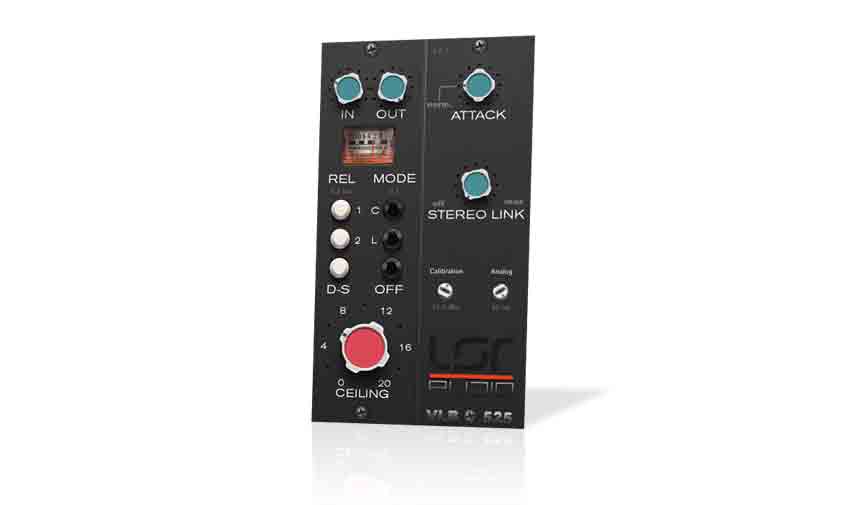MusicRadar Verdict
A character compressor with a unique flavour and capable of great results, so long as you can get the hang of it.
Pros
- +
Super-fast response. Great compression flavours. More flexible attack than the original 'Off' adds flavour without compressing.
Cons
- -
Can be tricky to get into. Not cheap. No parameter legending on knobs.
MusicRadar's got your back
Until now, LSR Audio has focused on original analogue-inspired plugins. VLB525 (VST/AU/RTAS/AAX) sees it moving into classic emulation, being a full-on virtualisation of API's classic 525 desk compressor.
VLB525's main panel (on the left side) looks very similar to the API original, while the supplementary right-hand panel adds extra functionality, including adjustable attack and stereo linking, level calibration and an overall Analog level control for hum and noise.
The plugin can be deployed as a 2:1 ratio compressor (C Mode) or a 20:1 ratio limiter (L Mode) with four Release settings (0.1s, 0.5s, 2s and 2.5s). The In(put) level controls the threshold, while the Out(put) control handles make up gain. The circuit can also be used in de-esser (D-S) mode, whereby a fixed EQ curve is applied to the sidechain. Working in conjunction with the Input control, the Ceiling knob fine-tunes the threshold and gain make up.
"As you dig deeper, the 525 reveals plenty of idiosyncrasies"
Just below the Mode (ratio) setting, the Off switch bypasses the gain reduction but leaves both the output amp and transformers in line, delivering the sound of the circuitry without the compression. And rounding things off is a tiny gain reduction VU meter, the ballistics of which are independent of attack and release times.
The VLB525 follows a feedback topology, with the sidechain tapped post gain reduction. This results in a slightly more laidback response than a feedforward (pre gain reduction) design. However, as you dig deeper, the 525 reveals even more idiosyncrasies. The best way to approach it is to select a very low Ceiling - 2, say - with one of the faster Release times, then adjust the Input threshold to achieve the desired gain reduction and bring the level back up using the Output gain. That's your basic compression.
Giving feedback
The fun begins, though, when you gradually increase the Ceiling to introduce more and more gain reduction, which is compensated by the automatic internal gain make up.
As you approach the highest settings, things start to get pretty strange, with the signal pumping in weird and wonderful ways. The release stage of the original hardware is frequency-dependent (higher frequencies are released faster) and that could be what's happening here; but also, very fast transients seem to slip through slightly and give a bit of extra push to the auto gain make up. So, sharp, short sounds actually become louder and snappier at the very highest Ceiling settings, but are far more pumping and coloured at the mid to high ones.
It's an intriguing architecture that ultimately breaks down into three very distinct flavours as you step through the Ceiling settings. The behaviour can be tweaked further using the Input threshold - and the settings are very sensitive, so care needs to be taken.
The ability to run VLB525 in Off mode just for colouration is useful, but all level controls are bypassed, so you have to adjust the input signal level to control the amount of drive applied. The de-ess option is too subtle for vocal de-essing but great at softening harsh signals like cymbals.
LSR have done a solid job with VLB525, capturing the character of the original and expanding on its functionality. It needs to be understood, though, that it does require rather more skill on the part of the engineer than other, more forgiving classic compressor/limiters.
Computer Music magazine is the world’s best selling publication dedicated solely to making great music with your Mac or PC computer. Each issue it brings its lucky readers the best in cutting-edge tutorials, need-to-know, expert software reviews and even all the tools you actually need to make great music today, courtesy of our legendary CM Plugin Suite.
“This update reflects everything we believe modern gear should be”: Neural DSP gives the Nano Cortex an almighty power-up with free NanOS 2.0.0 system update
“It’s honestly got me thinking hard about adding one to my own studio set up”: Two Notes Reload II review
“Gloriously adorned with a gold edge burst finish over a gold paisley and sparkle top”: Gretsch unveils the Paisley Penguin – a rare bird that growls – and the Honey Dipper Special, a resonator for all your roots rock manoeuvres











